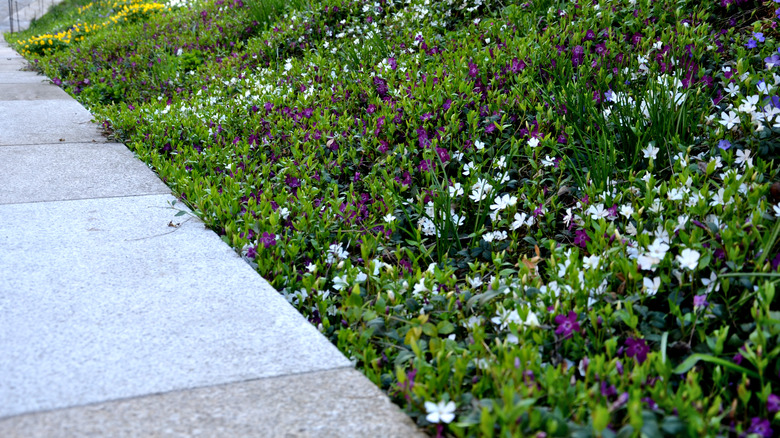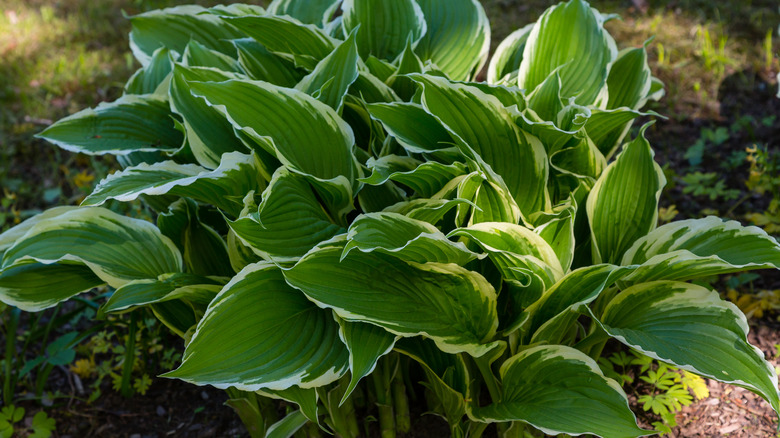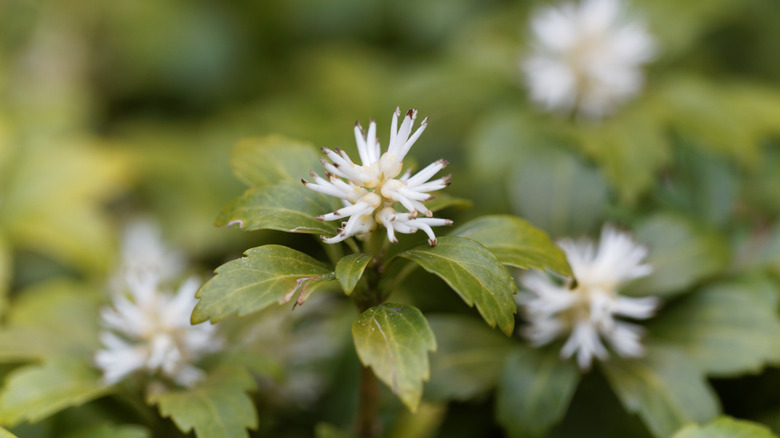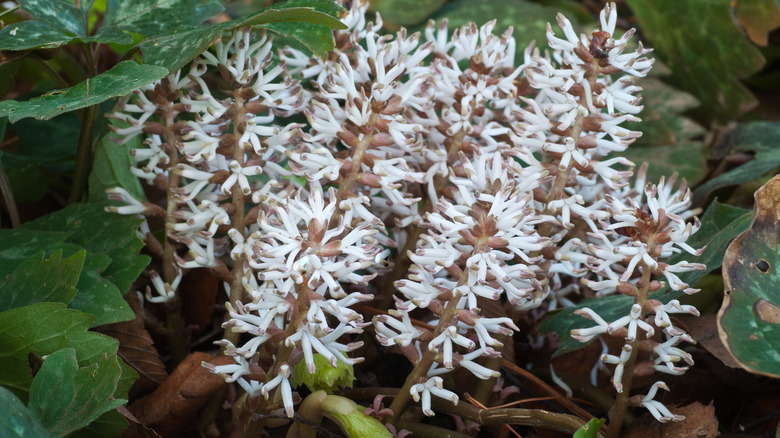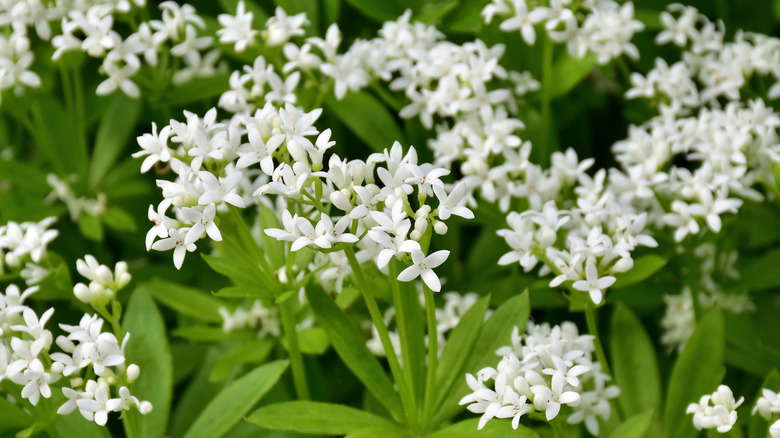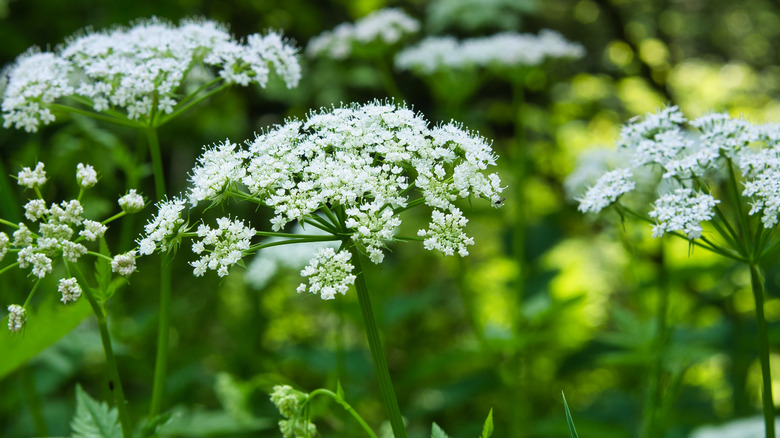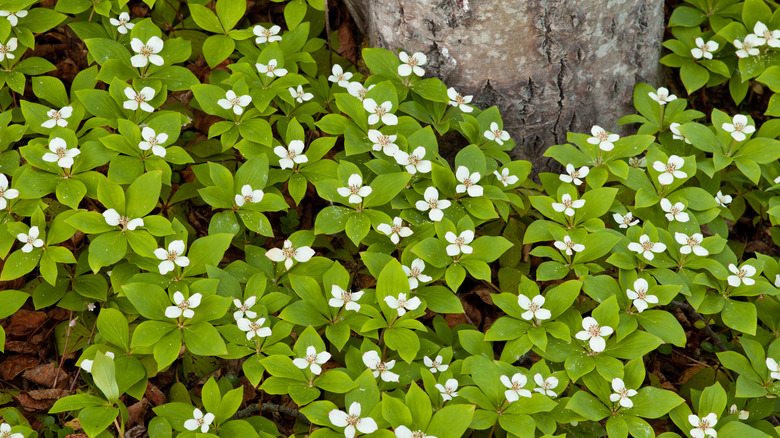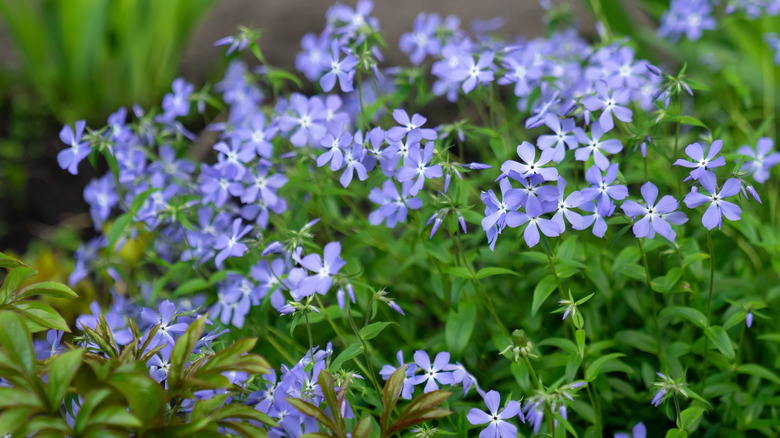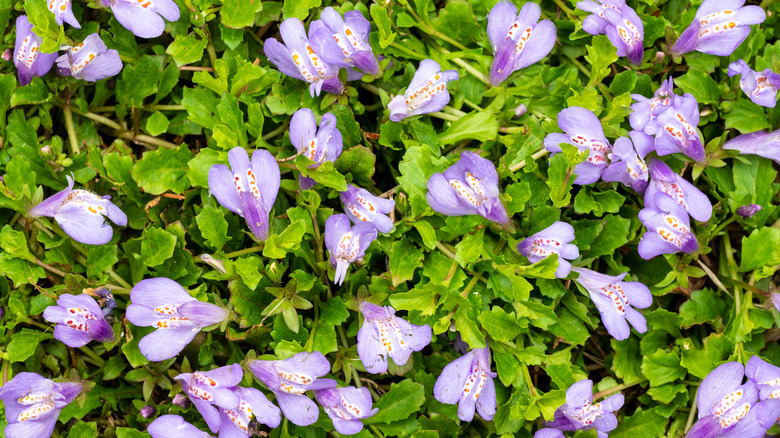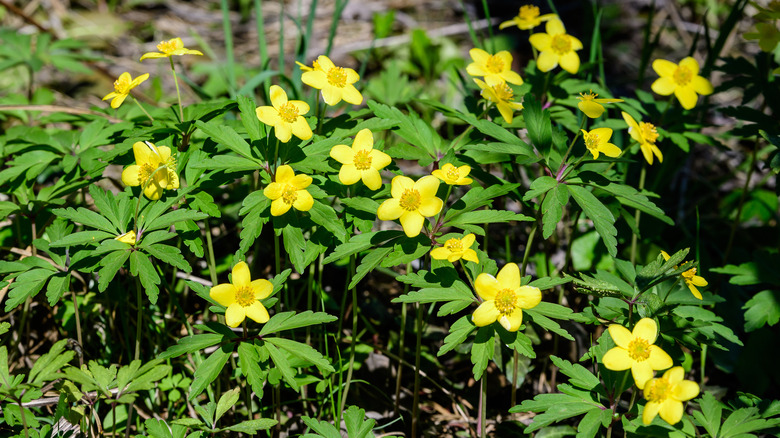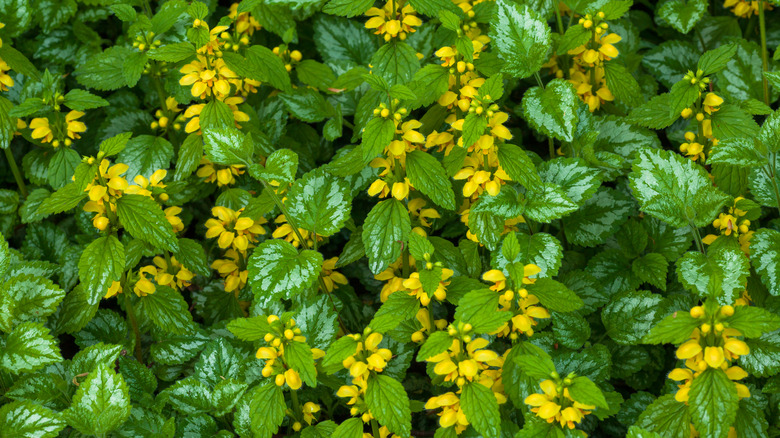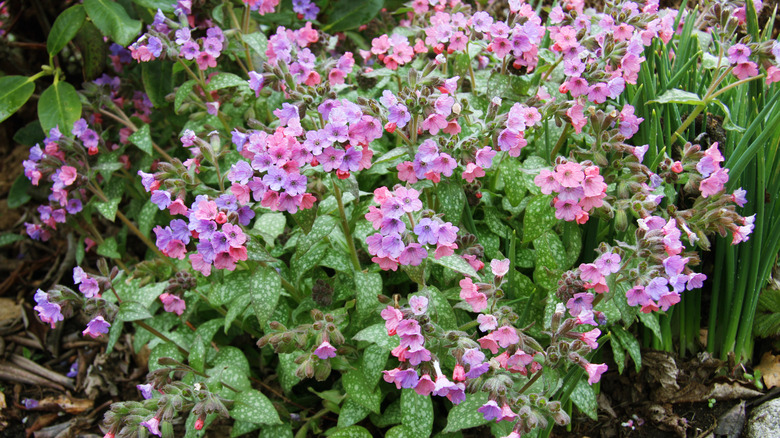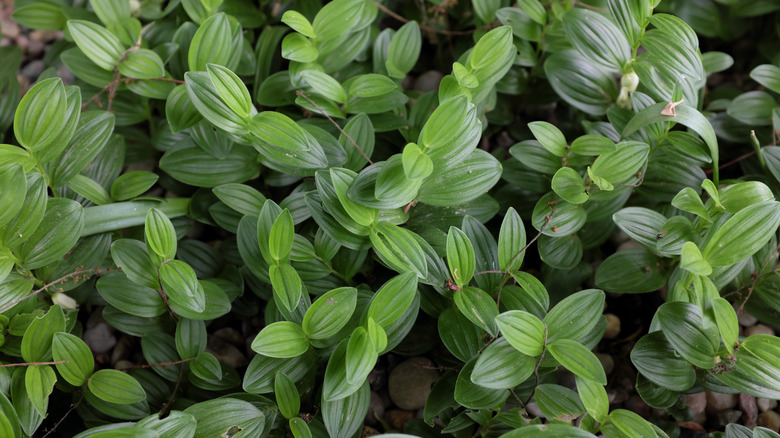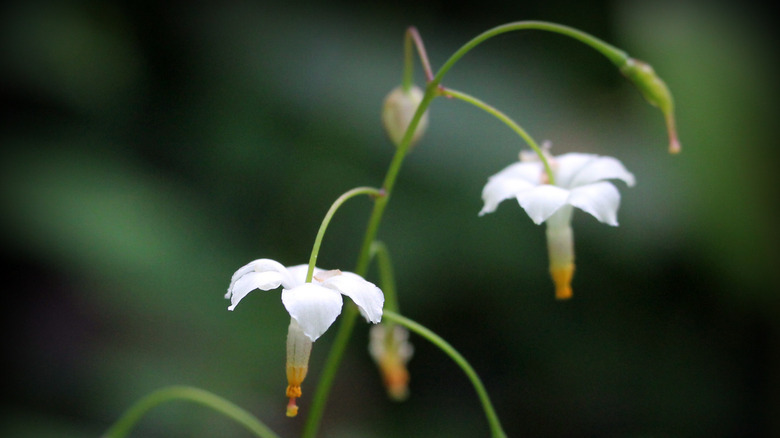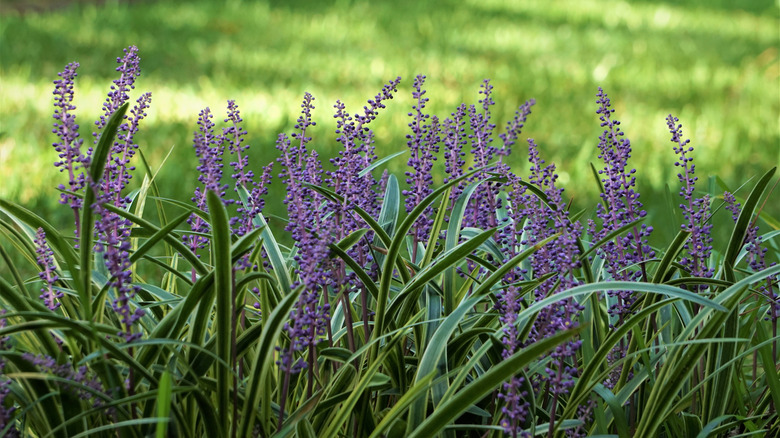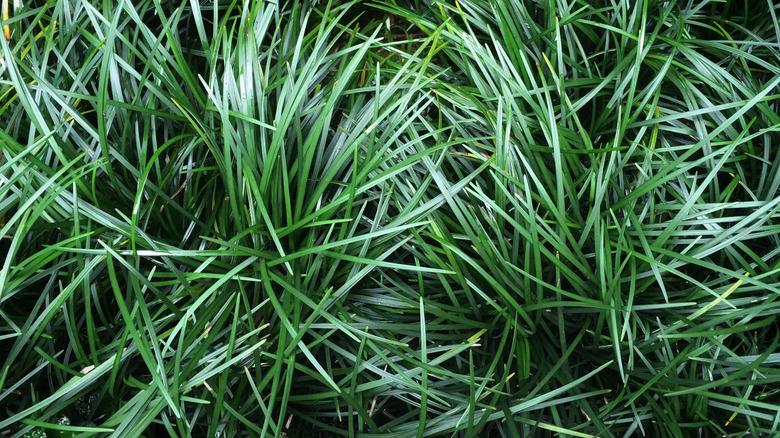15 Ground Cover Plants That Love Shade
Ground cover is a delightful addition to your lawn or garden. It not only keeps the soil from eroding but also most of it requires minimal care. According to The New York Times, you don't have to mow it, and you rarely need to prune it. Ground cover is more visually pleasing than gardening mulch, and there are dozens of varieties to choose from.
If you think you can't grow ground cover because you have a shady backyard or dark areas on your property, think again. There are plenty of ground covers that do quite well in the shade — and some even prefer it. Most shade-loving ground cover is hardy and perennial. In addition, some can handle a few hours of sun during long summer days. Whether you prefer a blooming ground cover or one that looks more like grass, there are plenty of options to choose from. We have compiled a list of 15 shade-loving ground cover plants that you will love.
1. Plantain lily
Plantain lilies (scientific name Hosta) are the best perennials for shade, according to Southern Living. With dozens of varieties to choose from, it has tons of different leaf sizes and shapes, varying from round to oval to heart-shaped. Foliage ranges from shades of green and blue with white or cream stripes on the leaves. Plant them in the spring and fall for the best results.
Bloom Season: summer in some varieties
USDA Growing Zone: 3 through 9
Growing Conditions: Hostas with yellow leaves can tolerate some sun
Soil Type: moist, fertile soil that drains
Size: 1 to 2 feet tall and 5 to 6 feet wide
2. Japanese pachysandra
Another ground cover plant that will provide your yard with small blooms in the springtime is the Japanese pachysandra (scientific name Pachysandra terminalis). These plants require little attention for all of the beauty they provide. To encourage growth, you may want to fertilize them in the spring with a slow-release fertilizer, according to HGTV.
Bloom Season: spring
USDA Growing Zone: 4 through 9
Growing Conditions: heavy shade
Soil Type: moist, well-draining
Size: 6 to 8 inches tall and 1 to 2 feet spread
3. Allegheny spurge
Related to the Japanese pachysandra, the Allegheny spurge (scientific name Pachysandra procumbens) is eye-catching with its silvery-green leaves. Blooms dangle from the stems as opposed to the Japanese version that stands more erect. The plant can become quite dense, and it occurs naturally in woods where the ground stays somewhat soggy. According to North Carolina State Extension, Allegheny spurge can last for years.
Bloom Season: spring
USDA Growing Zone: 7 and 8
Growing Conditions: shade to partial sun
Soil Type: moist
Size: 6 inches to 1 foot and 2 feet wide
4. Sweet woodruff
If you're looking for a ground cover that adds a bit of color to your lawn, then sweet woodruff (scientific name Galium odoratum) is an option. These small, perennial plants produce tiny, fragrant, white flowers that grow perfectly in the shade. The Spruce notes that sweet woodruff grows in just about any kind of soil, although it prefers moist soil.
Bloom Season: early spring
USDA Growing Zone: 4 through 8
Growing Conditions: shade to partial sun
Soil Type: moist to wet, well-draining soil
Size: 5 to 6 inches and 1 foot wide
5. Bishop's weed
Another plant with delicate white blooms is bishop's weed (scientific name Aegopodium podagraria). Gardening Know How points out that bishop's weed will grow where other plants refuse to. This plant grows and spreads quickly, so if you want to keep it under control, it is best to use an edging.
Bloom Season: summer
USDA Growing Zone: 3 through 9
Growing Conditions: full or partial shade
Soil Type: well-draining
Size: 6 inches tall and 1 foot wide
6. Bunchberry
Bunchberry (scientific name Cornus canadensis) also produces lovely, white blooms, but even when it is not in bloom it will add color to your lawn thanks to its bright, cheery green foliage. It will also produce red berries in the summer. To keep bunchberry happy, you will need to keep it watered. Better Homes & Gardens recommends using mulch to keep the surrounding soil from becoming too dry.
Bloom Season: spring
USDA Growing Zone: 2 through 6
Growing Conditions: shade to partial sun
Soil Type: well-drained soil
Size: 4 to 9 inches high and 6 to 12 inches wide
7. Periwinkle
If you like summer blooms, then periwinkle (scientific name Vinca minor) might be just what you're looking for. This plant is considered an annual, but it can survive as a perennial in the right conditions. Periwinkles are relatively easy to care for and, in some states, are considered invasive. That being said, Plant Care Today confirms it's an excellent ground cover plant that can help with soil erosion control and hiding grassless spots.
Bloom Season: summer
USDA Growing Zone: 4 through 11
Growing Conditions: shade to partial sun
Soil Type: well-draining
Size: 8 to 12 inches tall and 6 inches to 2 feet wide
8. Creeping mazus
Creeping mazus (scientific name Mazus reptans) is a semi-perennial plant that is easy to care for with an ability to spread. It does so when parts of the branches touch the soil and take root. According to the University of Arkansas Department of Agriculture, the plant has small, coarse leaves and produces small purple blooms with speckled lip formations.
Bloom Season: mid-spring to summer
USDA Growing Zone: 5 through 8
Growing Conditions: full shade to partial sun
Soil Type: well-draining
Size: Up to 2 inches tall and 6 inches to 1 foot wide
9. Creeping buttercup
Creeping buttercup (scientific name Ranunculus repens) is another ground cover plant that likes to spread. Considered a weed by many, this perennial plant produces cheerful, yellow blooms. To keep the plant under control, Cornell University recommends removing the dead flowers to prevent the plant from self-seeding and spreading.
Bloom Season: late spring to early summer
USDA Growing Zone: 3 through 8
Growing Conditions: partial shade
Soil Type: well-draining
Size: up to 1 foot tall and can spread up to 6 feet long
10. Yellow archangel
If you love yellow ground cover plants, then consider planting the yellow archangel (scientific name Lamium galeobdolon). This perennial features mottled green and white leaves that add a nice aspect to your lawn. The blooms are unique in that they feature a top petal resembling a hood and a speckled bottom lip. According to the University of Wisconsin, they can grow in dry areas but prefer moist soil.
Bloom Season: spring
USDA Growing Zone: 4 to 9
Growing Conditions: full shade to partial sun
Soil Type: moist soil
Size: Up to 1 foot tall and 1 to 2 feet wide
11. Lungwort
Another plant that showcases lovely blooms in springtime with mottled, silvery leaves is lungwort (scientific name Pulmonaria). These perennials grow low to the ground and produce funnel-shaped flowers. Be sure to keep them watered because they do not tolerate dry conditions well, per Iowa State University.
Bloom Season: spring
USDA Growing Zone: 4 through 9
Growing Conditions: full to partial shade
Soil Type: moist, but not soggy
Size: 18 inches tall and 2 to 3 feet wide
12. Dwarf Solomon's seal
Dwarf Solomon's seal (scientific name Polygonatum humile) is a perennial with small, cylinder-shaped white blooms that dangle from its branches. After the flowers bloom in summer, you should see small bluish berries hanging from the branches. Dwarf Solomon's seal is easy to care for as long as you keep it watered, according to Missouri Botanical Garden.
Bloom Season: May and June
USDA Growing Zone: 4 through 8
Growing Conditions: full shade to partial shade
Soil Type: moist
Size: 6 inches to 1 foot tall and 1 foot wide
13. Northern inside-out flower
If you want something a little different, maybe you should look into the northern inside-out flower (scientific name Vancouveria hexandra). The deciduous perennial plant is often called the inside-out flower because the bloom looks like it is turned inside out. The plant blooms in clusters and it has heart-shaped leaves that lay close to the ground, according to Oregon State University.
Bloom Season: late spring to early summer
USDA Growing Zone: 6
Growing Conditions: prefer cooler temperatures
Soil Type: moist
Size: 10 to 20 inches tall and can be 12 inches wide
14. Monkey grass
If you're looking for a ground cover that looks more like grass, then monkey grass (scientific name Liriope muscari) is a lovely option. This perennial produces long, slender leaves, and its blooms are a vibrant shade of purple that is hard to miss. Monkey grass is easy to care for and can even withstand cooler temperatures, per Martha Stewart.
Bloom Season: summer
USDA Growing Zone: 6 through 10
Growing Conditions: prefers warmer climates
Soil Type: moist and well-draining
Size: 1 to 2 feet tall and 1 to 2 feet wide
15. Dwarf mondo grass
Another ground cover plant that looks like grass is dwarf mondo grass (scientific name Ophiopogon japonicus "Nanus"). Like monkey grass, dwarf mondo grass is an easy-to-care-for perennial, and it makes an excellent border plant for flower beds or gardens. Gardenia points out that because mondo grass is dense, it is also an excellent weed preventative.
Bloom Season: N/A
USDA Growing Zone: 7 through 9
Growing Conditions: full to partial shade
Soil Type: moist and well-drained
Size: 4 to 6 inches tall and 8 inches wide
